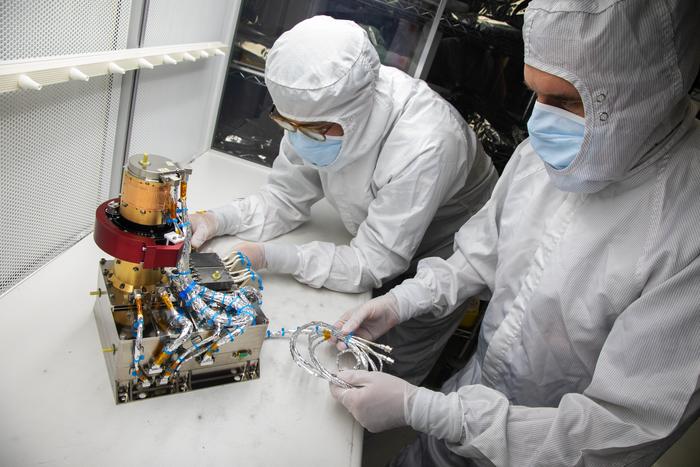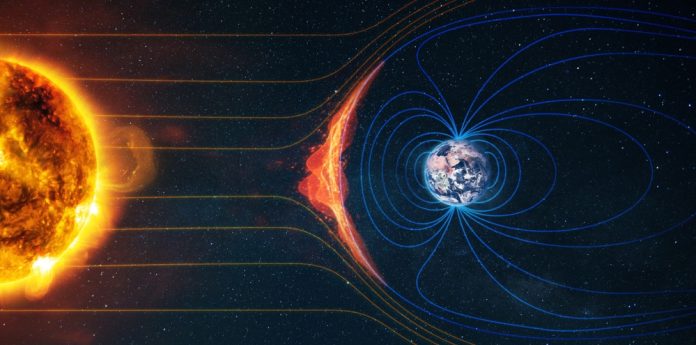The Southwest Research Institute (SwRI) has successfully delivered and integrated its Solar Wind Plasma Sensor (SWiPS) into the National Oceanic and Atmospheric Administration’s (NOAA) upcoming Space Weather Follow On-Lagrange 1 (SWFO-L1) satellite.
This advanced sensor, designed to monitor solar wind and space weather, will provide critical real-time data to help predict and mitigate the impact of solar storms on Earth.
The role of SWiPS in monitoring solar activity
SWiPS is designed to measure the properties of ions released by the Sun, including those associated with coronal mass ejections (CMEs)—violent bursts of solar plasma that can interact with Earth’s magnetic field.
These measurements will be crucial in forecasting space weather events that have the potential to disrupt satellites, power grids, and communication systems on Earth.
Dr Robert Ebert, the principal investigator of the SWiPS project at SwRI’s Space Science Division, emphasised the significance of this achievement: ” The delivery and integration of SWiPS is the culmination of four years of hard work by a very dedicated and talented team. I couldn’t be prouder of this group.
“The measurements made by SWiPS will provide warning in real-time of phenomena associated with space weather before they arrive in the space environment near Earth.”

The SWFO-L1 satellite, now equipped with SWiPS, will orbit the Sun at a location known as L1, approximately one million miles from Earth.
From this vantage point, the satellite will observe the Sun’s activity and measure solar wind conditions, providing early detection of potentially hazardous space weather.
The importance of space weather monitoring
Space weather refers to changes in the solar environment that can affect Earth and its technology.
Solar flares and CMEs, in particular, can produce intense bursts of energy and radiation that travel toward Earth, potentially causing disruptions to satellites, communication networks, GPS systems, and power grids. Astronauts in space may also be at risk from the heightened radiation during such events.
As society becomes increasingly reliant on technology, the risks posed by space weather grow. Satellites that facilitate global communication, navigation, and surveillance could be rendered inoperative by a severe solar storm.
Additionally, geomagnetic storms can induce currents in power grids, leading to widespread blackouts, as witnessed during the 1989 Quebec blackout caused by a CME.
By monitoring solar wind and providing early warnings, SWFO-L1 and SWiPS will help mitigate these risks. Early detection will allow satellite operators to protect critical systems and help power companies prepare for potential disruptions.
A major technological achievement
The SWiPS sensor is based on a proven design used in the European Space Agency’s Rosetta mission, which explored a comet in deep space.
Its compact size, minimal resource requirements, and advanced data capabilities make it an ideal instrument for the SWFO-L1 mission and similar future missions.
Alongside SWiPS, SwRI also contributed to the SWFO-L1 magnetometer, which will measure the interplanetary magnetic field. Together, these instruments will provide NOAA with the data needed to forecast the severity of geomagnetic storms that could affect Earth.
The future of space weather prediction
NASA, in partnership with NOAA, plans to launch the SWFO-L1 satellite in 2025 aboard a SpaceX rocket.
The satellite will share its ride with NASA’s Interstellar Mapping and Acceleration Probe (IMAP), a mission in which SwRI also plays a key role.
The ability to predict and prepare for space weather is more crucial than ever. As more critical infrastructure relies on space-based technology, missions like SWFO-L1, equipped with sensors like SWiPS, will be instrumental in protecting our technological systems and ensuring the safety of astronauts venturing beyond Earth’s atmosphere.









